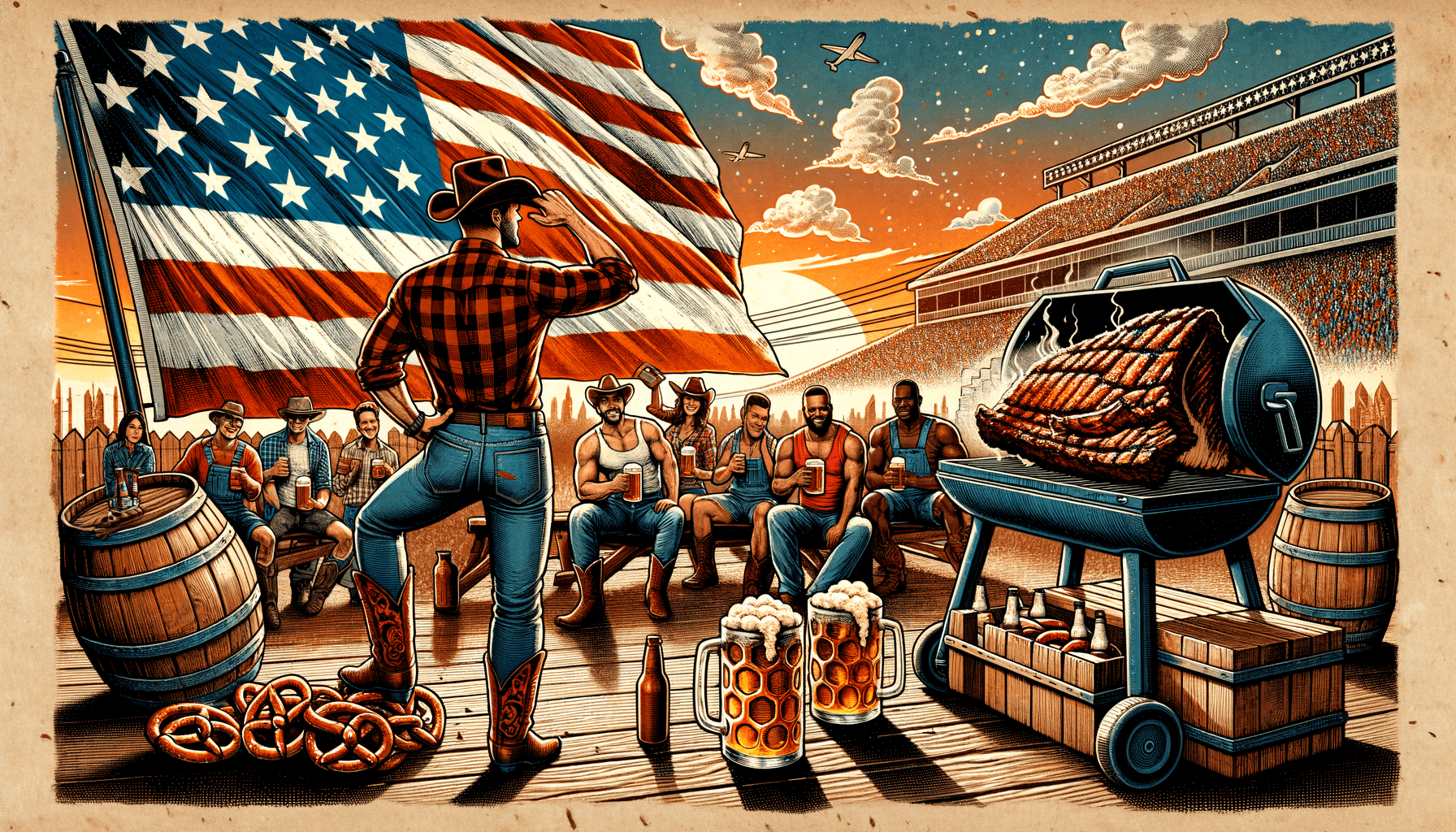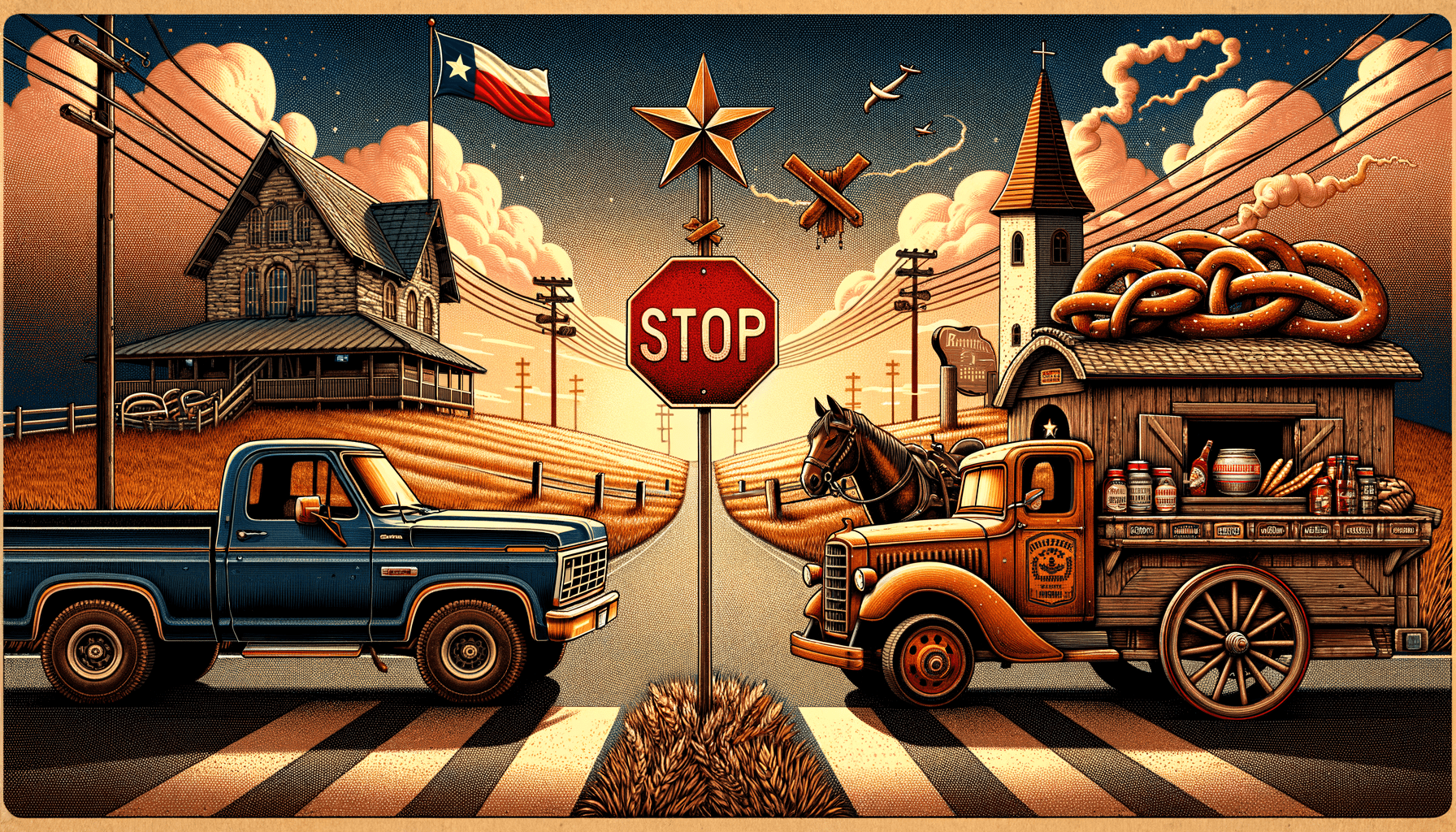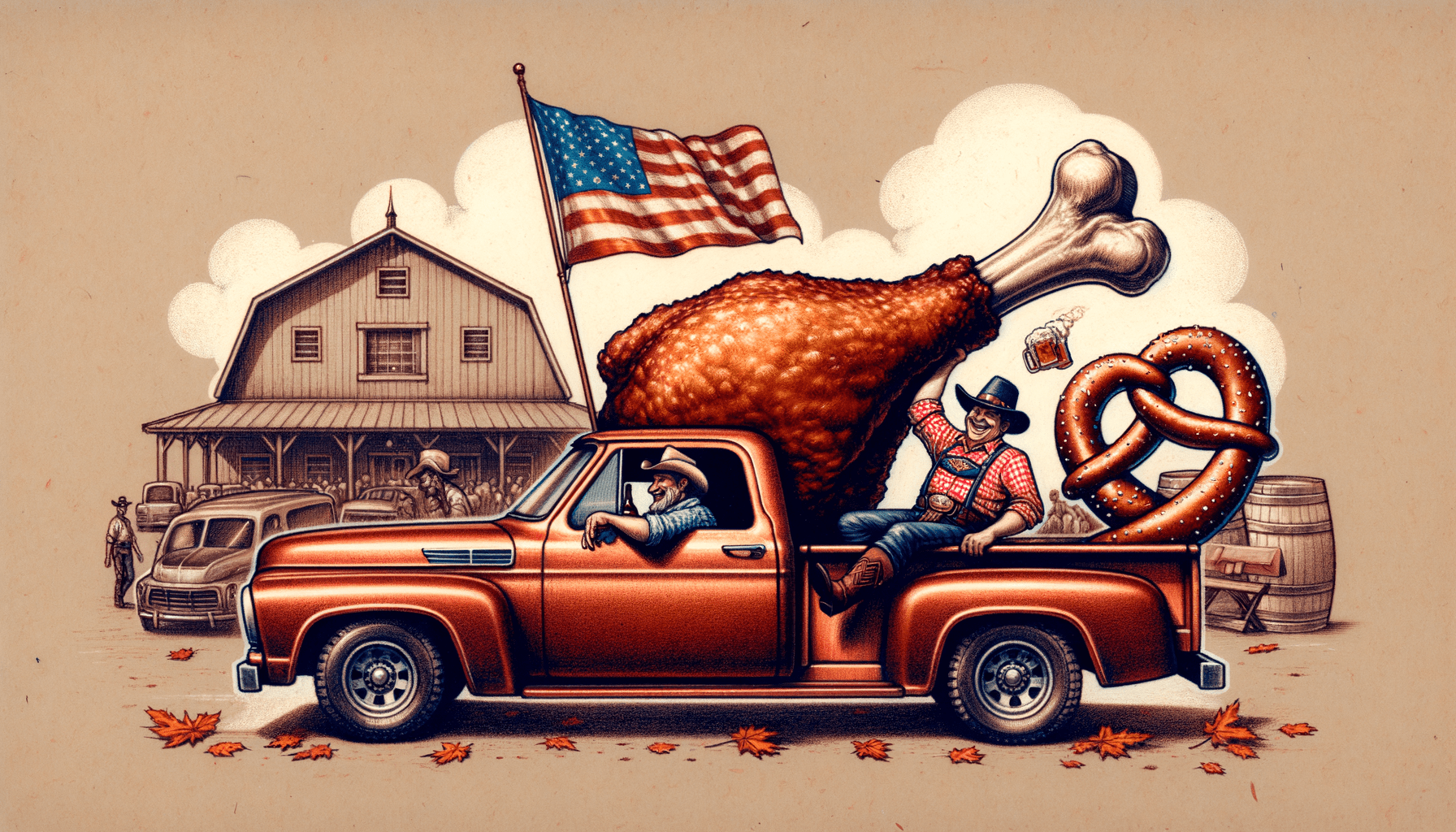Ja mei, only in America can a piece of cloth turn into a whole religion. In Bavaria, we wave blue-and-white checkered flags mostly to show who’s holding the bigger Bier measure at the Volksfest. But here in Texas, the Stars and Stripes—ach du liebe Zeit—that thing has more rules than a German tax form. Still, respekt ist angesagt, because this flag carries a history that is deep, stubborn, und pretty inspiring.
From Rebels to a Flag – A Revolution in Color
Back in the late 1700s, the colonists were tired of King George telling them how to stir their tea. So around 1775, as cannons were firing at Boston and militia boys were cooking whatever early version of BBQ they had, the idea came: “We need our own banner.” The first one, the so-called Continental Colors, looked suspiciously British—thirteen stripes but still the Union Jack in the corner. Ja, not exactly a clean break.
Soon came the tale of Betsy Ross in 1776. Legend says George Washington asked her to stitch the first American flag with thirteen stars in a circle. Sounds romantic, like a Hallmark movie, ja? But historians argue whether she really did it. No proof, nur viel gossip. Still, the image of Frau Ross with her needle is now burned into American memory, like brisket smoke in a Texas shirt.
Stars & Stripes – Growing Like Texas Portions
By 1777, Congress said officially: thirteen stripes for the thirteen colonies, alternating red and white. The blue field with stars represented a “new constellation.” Beautiful idea, nicht wahr? Each star = one state, each stripe = one brave colony that said, “No more monarchy nonsense.”
But America is like a brewery fermenting too fast—always expanding. Every time a new state joined, a star was added. First came 15 stars and 15 stripes in 1795 (this version flew during the War of 1812—the one Francis Scott Key saw while writing “The Star-Spangled Banner”). But stripes got confusing fast. In 1818, Congress decided: halt! Always 13 stripes for the original colonies, only stars will grow. That’s why today we’ve got 50 stars, but still just 13 stripes holding the old story together.
What Do the Colors Mean, Anyway?
Now, folks ask: do the colors have meaning? Ja sicher! Although officially that came later when the Great Seal was explained. Red = valor and hardiness (basically, fighting spirit). White = purity and innocence (good intentions, even if politics rarely matches). Blue = perseverance, vigilance, justice (also, the color of Bavarian Weißbier labels, but that’s coincidence).
Think of it this way: stripes tell the origin, stars tell the growth. Together, the flag is both roots and branches. A proper family tree, hanging not on paper, but in the wind.
Brewkraut’s Box
- What’s the deal: The flag started with thirteen colonies, grew stars with every new state, stripes stayed at 13. Colors = solid values.
- What’s nonsense: The Betsy Ross story is nice Volksmärchen, but not 100% proven. Don’t lose sleep over it.
- Prost-finale: The flag is not decoration—it’s storytelling in cloth. Treat it like your Oma’s china, not like paper napkins after BBQ.
The Flag Today – Texas Does It Loud
Nowadays, Americans treat their flag with a seriousness that makes German Fußball fans look casual. There’s the U.S. Flag Code—rules about how to display it (never touch the ground, always light it if flown at night, fold it nice and triangular like a brisket wrap). On flag holidays—Memorial Day, Independence Day, Veterans Day—you’ll see Old Glory flying proudly from porches, BBQ pits, stadiums, even auf Pickup Trucks.
And Texas? Hoho, here the Lone Star has its own prideful dance, but the U.S. flag still stands tall beside it. During Friday night football games, everyone puts hand to the heart and says the pledge—it’s emotional, even for a grumpy Bavarian like me who once only pledged allegiance to the next Maß of Helles.
The truth? This flag is more than fabric. It became a symbol of unity, of sacrifice, of hope. Whether sewn by Betsy Ross or somebody else, its value comes not from the threads but from the people standing under it.
So, next time you see Americans rise during the national anthem, hats off and eyes forward, think of it less as stiff ceremony and more as a big Prost to their shared history. Because, meine Freunde, if Bavarians can toast 1,000 years of beer brewing, surely Americans can honor 250 years under the Stars and Stripes.
And as for me in Texas: I’ll fly my U.S. flag with pride right next to my Bavarian checkered one. That way, the neighbors know exactly who’s in charge of the grill and who brought the Weißbier. Spoiler: it’s always me.



